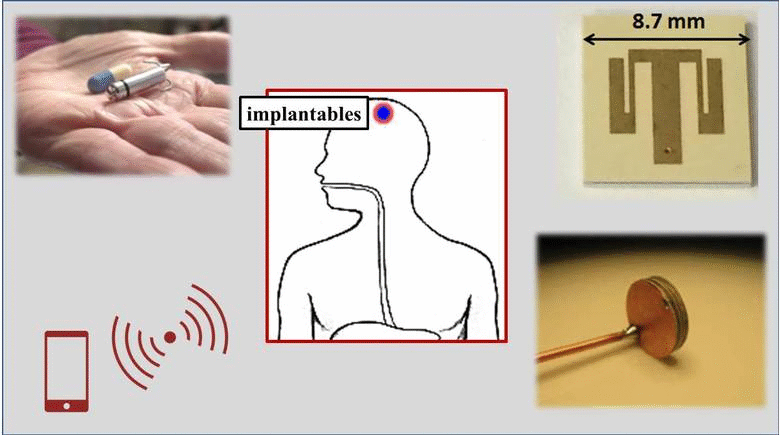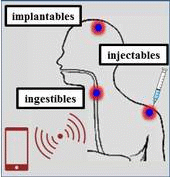
Wireless medical devices used to sense physiological parameters (sensors) and/or stimulate the nervous system (stimulators) are becoming increasingly popular. In fact, 27% of Americans already use some sort of wearable device, such as a smart watch that records heart rate and number of steps, or smart socks that track speed and calories. Nevertheless, wearables are limited to monitoring parameters that are readily accessible from outside the human body. With these in mind, wireless in-body medical devices that are placed directly inside the human body are promising an entire new realm of applications.
In this paper, a holistic and comparative review is conducted that focuses on three types of in-body medical devices: a) devices that are implanted inside the human body (implantables), b) devices that are ingested like regular pills (ingestibles), and c) devices that are injected into the human body via needles (injectables). Design considerations, current status and future directions related to the aforementioned devices are discussed. Indeed, design of in-body devices is highly challenging, and needs to concurrently address concerns related to operation frequency, antenna design, powering, and biocompatibility. Currently, extensive research efforts are being pursued to address these concerns, develop novel sensing methods and materials, and, eventually, explore new clinical applications. Thus, in-body devices are opening up new opportunities for medical prevention, prognosis, and treatment that quickly outweigh any design challenges and/or concerns on their invasive nature.
In-body devices are already in use for several medical applications, ranging from pacemakers and capsule endoscopes to injectable micro-stimulators. As technology continues to evolve, several new and hitherto unexplored applications are brought forward. In the long-term, unobtrusive in-body devices are envisioned to collect a multitude of physiological data from the early years of each individual. This big-data approach aims to enable a shift from symptom-based medicine to a proactive healthcare model.

